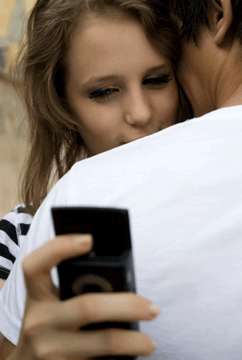HEALTHY/UNHEALTHY RELATIONSHIPS:
LESSON: Relationships and Change
Listen to the audio clip (of the teens girls).
 View the video clip Wake Up Call from the website Sex, Etc.) Then consider what Peggy McElvoy, a school nurse, made a few years ago
about how a relationship can be compared to a “Cycle of Hearts and Roses.”
View the video clip Wake Up Call from the website Sex, Etc.) Then consider what Peggy McElvoy, a school nurse, made a few years ago
about how a relationship can be compared to a “Cycle of Hearts and Roses.”
Ask students how the Cycle of Hearts and Roses was illustrated in the Wake Up Call video.
The graphic design the student creates and his/her rationale provided in either verbal or written form for creating their design in this way.
LESSON: Relationships and Change
Overview
This lesson is designed to help youth discriminate between a healthy and unhealthy relationship. It also raises the issue that relationships can change over time, and sometimes the changes partners experience may not be healthy. The lesson focuses on the importance of recognizing that unhealthy changes are occurring. This lesson may be used to provide background for further work on this topic, encouraging students to seek help and break the relationship when it becomes necessary.
This lesson is designed to help youth discriminate between a healthy and unhealthy relationship. It also raises the issue that relationships can change over time, and sometimes the changes partners experience may not be healthy. The lesson focuses on the importance of recognizing that unhealthy changes are occurring. This lesson may be used to provide background for further work on this topic, encouraging students to seek help and break the relationship when it becomes necessary.
Level:
Middle / High School
Objectives:
Time: 1 class period
Preparation and Materials:
Objectives:
- Review characteristics of both healthy and unhealthy relationships
- Illustrate how a healthy relationship can change to an unhealthy relationship
Time: 1 class period
Preparation and Materials:
- Whiteboard and markers
- Unlined paper
- Conversations With Teen Girls audio clip
- Wake Up Call video clip
- Cycle of Hearts and Roses video clip
Procedures
Listen to the audio clip (of the teens girls).
- Ask the group to brainstorm their ideas on what constitutes a healthy and
unhealthy relationship. Record their ideas on a white board.
- View the video clip, Conversations with Teen Girls. Discuss with youth some of
the comments the girls made. Refer to one girl’s comment – “that sex can be
used as a “sort of weapon.” Ask:
- What do you think she meant by that?
- How do you think that could happen?
- What do you think she meant by that?
Activity
 View the video clip Wake Up Call from the website Sex, Etc.) Then consider what Peggy McElvoy, a school nurse, made a few years ago
about how a relationship can be compared to a “Cycle of Hearts and Roses.”
View the video clip Wake Up Call from the website Sex, Etc.) Then consider what Peggy McElvoy, a school nurse, made a few years ago
about how a relationship can be compared to a “Cycle of Hearts and Roses.”Ask students how the Cycle of Hearts and Roses was illustrated in the Wake Up Call video.
- Ask students to share other examples that illustrate this cycle. The examples do
not need to come from a personal experience.
- Encourage youth to recall a real situation they’ve heard about or a scenario seen
on TV or in the movies.
- Distribute sheets of unlined paper and markers, and ask each student to design their
own graphic to illustrate the way a healthy relationship can change and to become an
unhealthy one.
- Have students share their graphic designs with the class and explain briefly either
verbally or in a short paragraph their rationale in creating this particular design.
Assessment
The graphic design the student creates and his/her rationale provided in either verbal or written form for creating their design in this way.